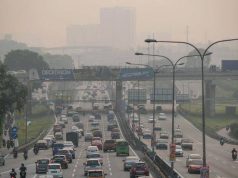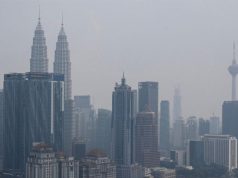BANGI, September 24- Malaysia and Indonesia are in the process of drafting a Memorandum of Understanding to tackle transboundary haze, said Natural Resources and Environment Minister Datuk Seri G. Palanivel.
He said the MoU would provide for the two countries to share experience, expertise and information on how to handle the matter.Palanivel said he was waiting for the appointment of Indonesia’s new minister for the environment before visiting Jakarta in November or December to have discussions on the MoU.
He spoke to reporters after officiating at the International Ozone Day at the Universiti Kuala Lumpur Malaysia France Institute (UniKL MFI) here.Department of Environment director-general Datuk Halimah Hassan said discussions were ongoing between environment ministry senior officials of the two countries to draw up the MoU.
She said the focus of the MoU would be on the prevention of open burning and forest fires.Halimah said the MoU between Malaysia and Indonesia was different from the Asean Agreement on Transboundary Haze Pollution ratified by Indonesia recently.
Indonesia’s parliament voted on Sept 16 to ratify the regional agreement, 12 years after the government had signed it.The agreement was drawn up after the worst haze on record occurred in 1997.
The cause of the pollution was the slash-and-burn clearing of forests in Indonesia to prepare land for planting of crops, particularly oil palm.The other nine Asean member countries had ratified the agreement as of June 2013. All the Asean countries signed the pact in June 2002 in Kuala Lumpur.
On the International Ozone Day, Palanivel said in his speech that from Jan 1 next year, the use of methyl bromide as a pesticide would only be allowed for quarantine and pre-shipping activities.”Beginning January 2015, the import of ozone-destroying hydrofluorocarbons would be reduced by 10 per cent from the congealing limit in 2013.
“This is a challenge for the industry which has to change the technology to produce products that use alternative materials that do not affect the ozone layer and the environment in general,” he said.
– BERNAMA











